Previously, we studied a circuit that switch the registers' value (= outputs) to the inputs of the ALU:
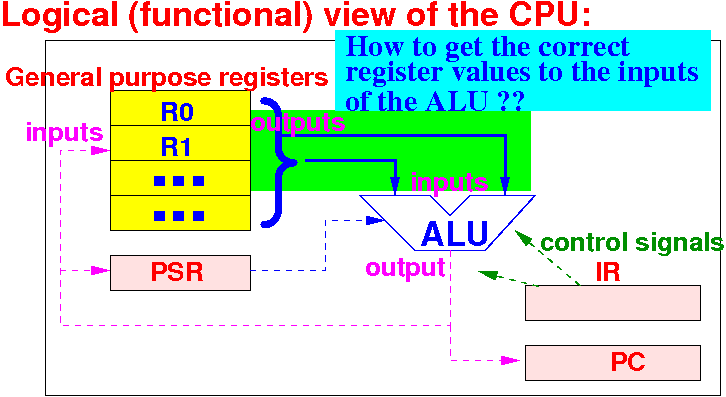
In this set of slides, we will study a circuit that stores the ALU output into the correct destination register:
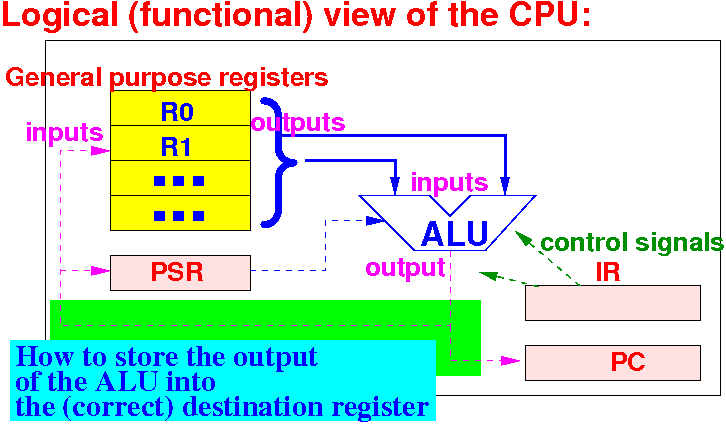
|
A one-bit memory cell has 2 inputs (data input and write control) and 1 outputs:
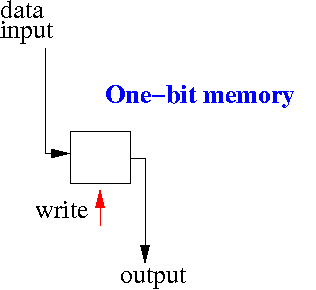
When
write=0, the
output will
remain
unchanged
(= remembers)
When
write=1, the
output become
equal to the
input
(= updated)
DEMO:
/home/cs355001/demo/circuits/1-bit-memory
A register (or memory cell) consists of N one-bit memories under control by a write signal:
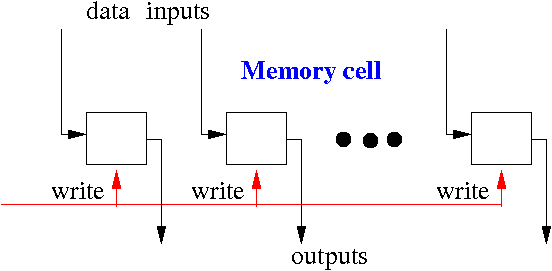
DEMO: /home/cs355001/demo/circuits/4-bit-memory
(The demo shows a
4 bit memory cell, it's
easy to make
an 8 bit or
32 bit memory cell)
Note: we
will study the
internals of
memory cells
later
Now that you have seen how memory cells are written (= updated), I will next:
|
Each CPU has its own instruction encoding format.
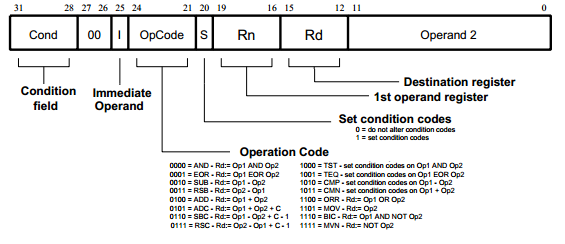
This is the ARM instruction encoding format (each ARM instruction is 32 bits long)
The Rd field is used to select the destination operand for output of the ALU:

Sample ARM add assembler instructions:
3 main: 4 0000 081083E0 add r1, r3, r8 5 0004 085083E0 add r5, r3, r8 6 0008 089083E0 add r9, r3, r8 |
Can you spot the place of the destination register number field in the ARM's "add" instruction ???
Here they are: (bytes stored in little endian ordering !)
3 main: 4 0000 081083E0 add r1, r3, r8 5 0004 085083E0 add r5, r3, r8 6 0008 089083E0 add r9, r3, r8 |
Can you spot the place of the destination register number field in the ARM's "add" instruction ??? (Did you find the field location ?)
Selecting the (outputs of) registers to the (input of the) ALU has been discussed:
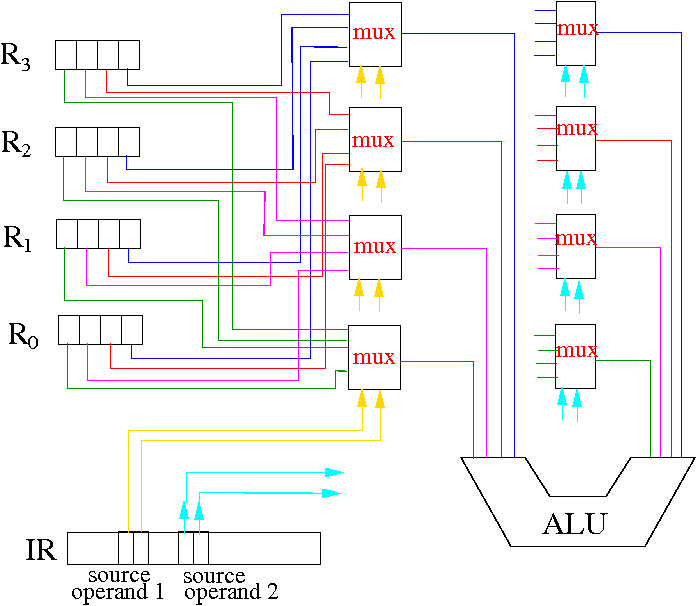
I will only present this switching circuit in the lecture material (for brevity):
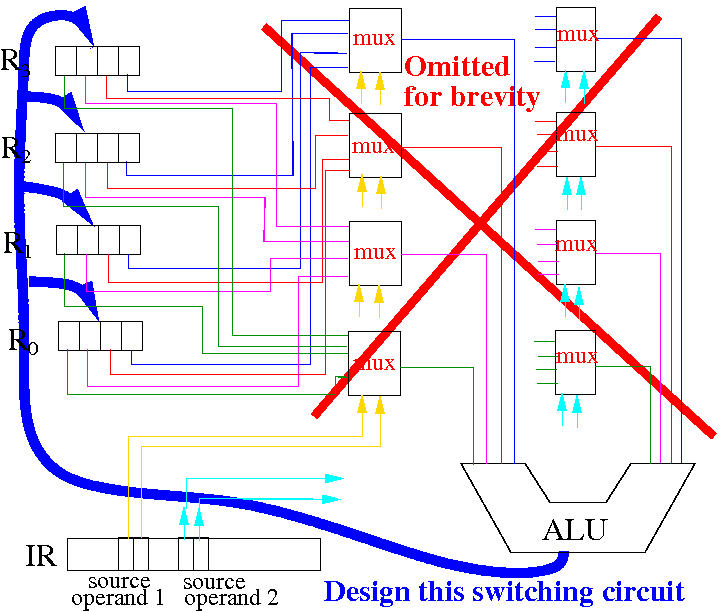
Circuit used to update the destination register with the values (= output) of the ALU:
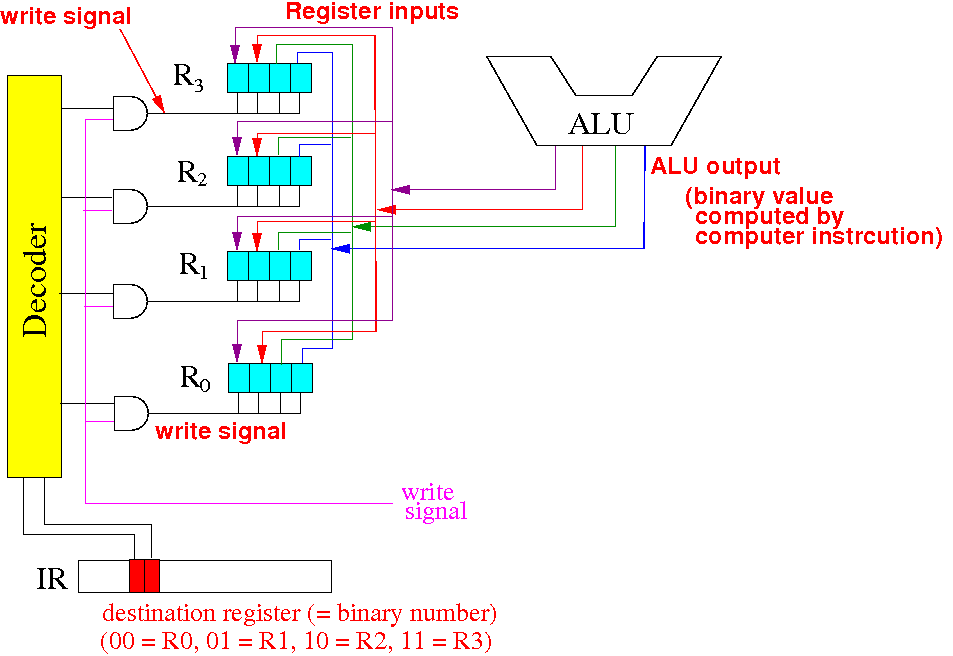
I will explain this circuit in the next few slides...
Problem description:
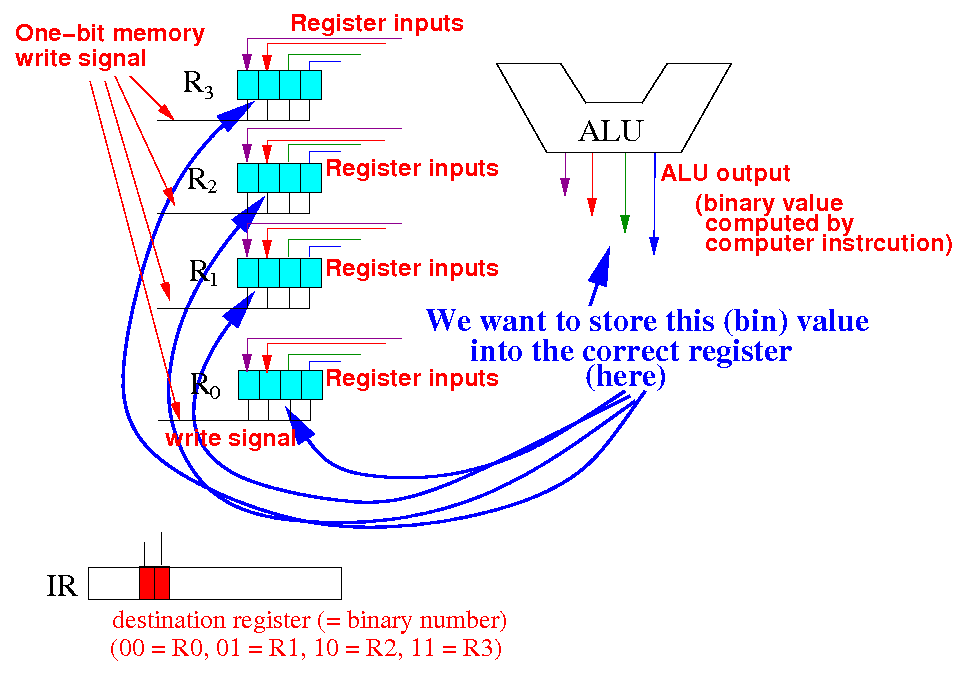
Connect the output bit of ALU to the corresponding input bit of each register:
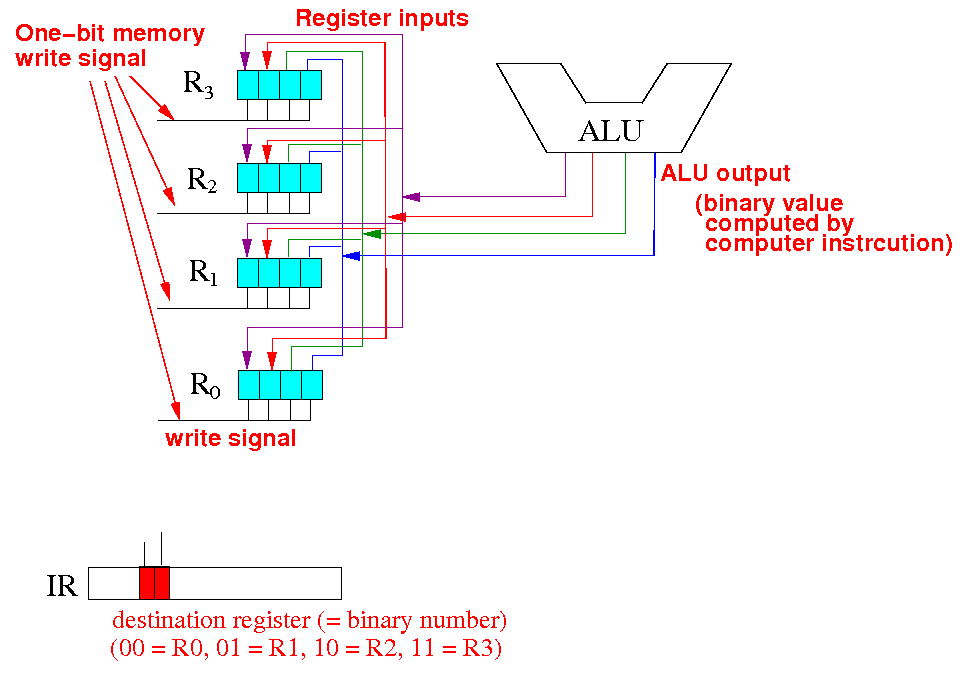
What have we achieved:

The CPU has a write signal used to control the time it wants to update registers:
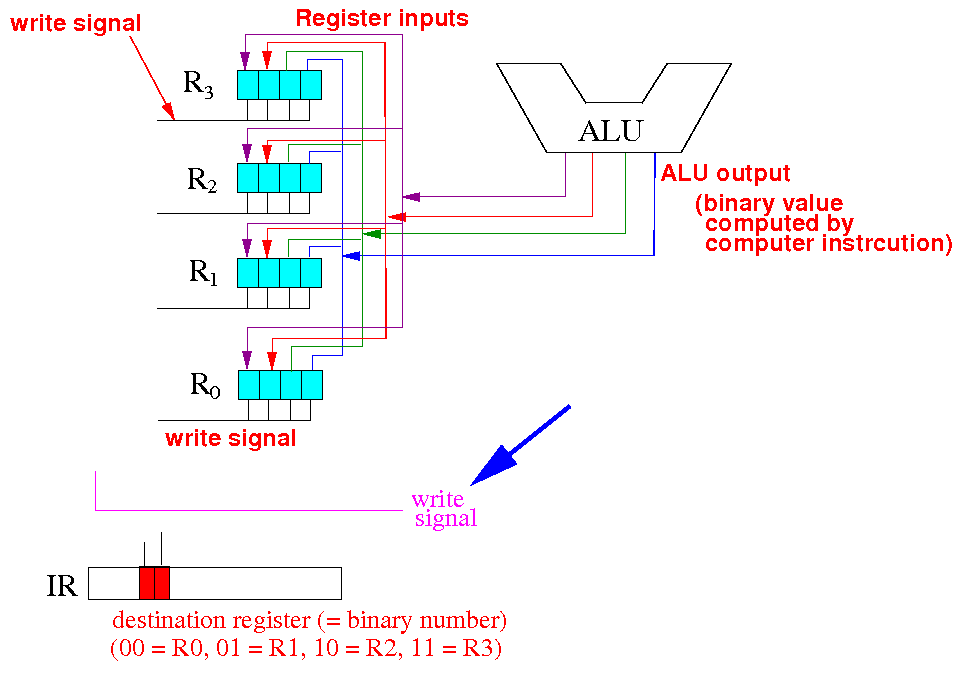
Use a decoder to select the destination register to write:
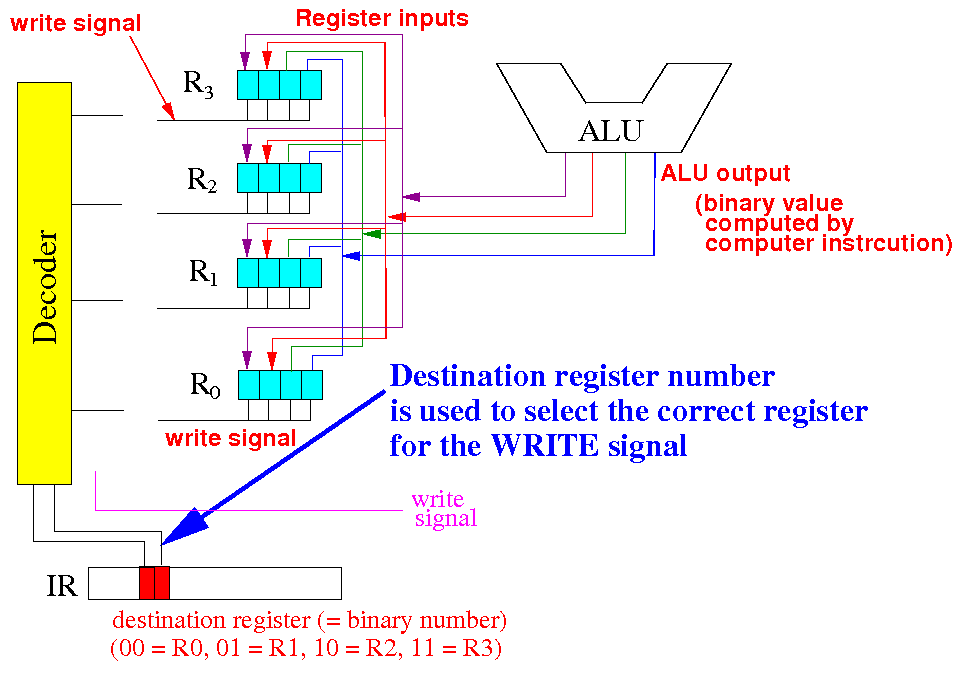
This AND gate will allow the CPU to control sending a write signal to R0:
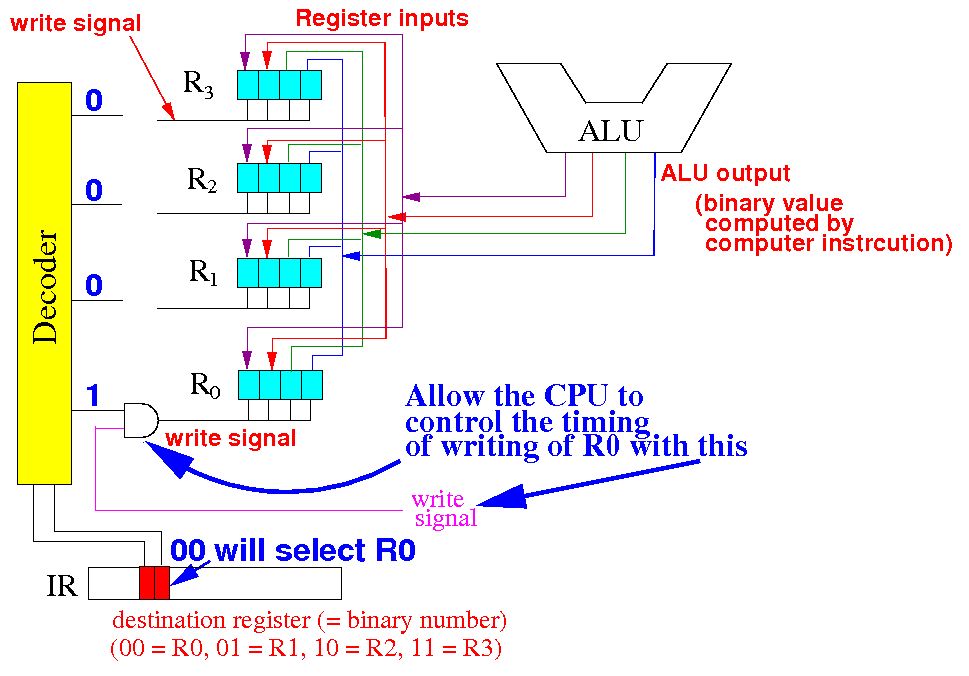
This AND gate will allow the CPU to control sending a write signal to R1:
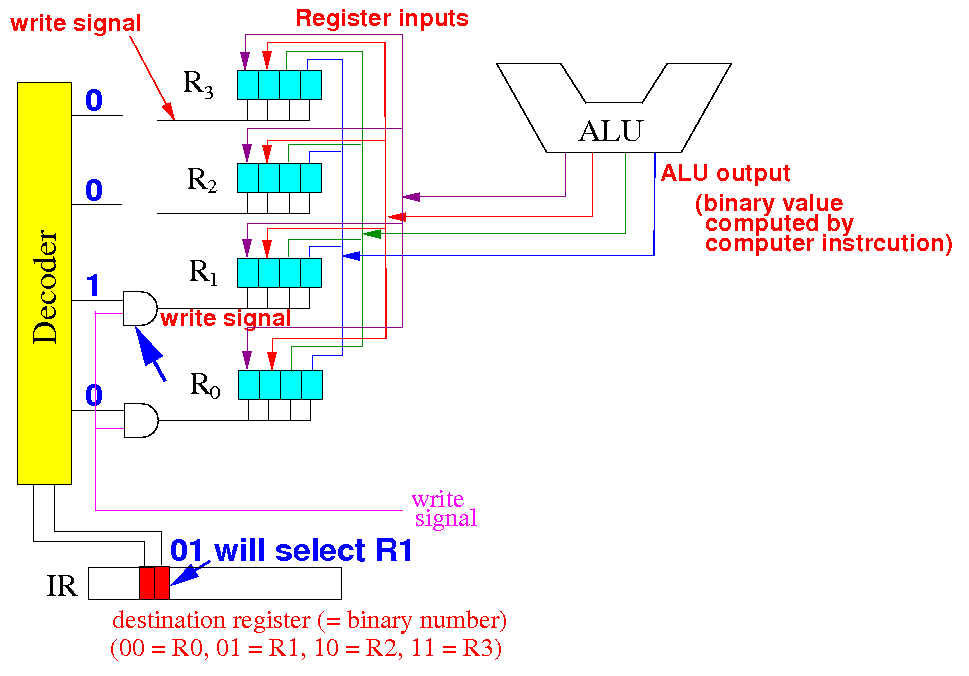
This AND gate will allow the CPU to control sending a write signal to R2:

This AND gate will allow the CPU to control sending a write signal to R3:

Demo circuit looks like this:

DEMO file: /home/cs355001/demo/circuits/alu-reg